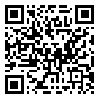Background and aims: The application of computer codes and numerical modeling in studies and industry is growing. When using computer codes, the accuracy of these encodings and modelings are big questions. Comparing the results of the software with experimental results is the best method of evaluating these programs. The objective of this study was to experimentally validate a software program developed for local exhaust ventilation design.
Methods: In this experimental study, seven different local exhaust ventilation systems were designed and constructed. Velocity pressure, static pressure, total pressure and air velocity were measured at key points of each system. All measured values were compared with similar calculated values by computer software. One-sample T test and Bland Altman plot were used to compare the similar measured and computed parameters. SPSS version 19 was applied for statistical analysis.
Results: The percentage difference of measured and calculated air velocities at all channels and hoods were ignorable with maximum amount of 0.5%. Difference between the measured and the calculated values of velocity pressure, static pressure and total pressure in the entire systems were less than 5 percent. Bland-Altman plot and one sample T test showed that the differences were in the range of 2SD and confirmed matching.
The results revealed that the air velocities measured with Pitot tube are much more accurate than those measured by thermal anemometer with maximum difference of 14.7%.
Conclusion: This study showed that the tested software has an acceptable accuracy with less than ± 5% of error. It also revealed that the application of Pitot tube is much more accurate that thermal anemometer.
Received: 2016/12/10 | Accepted: 2017/10/8 | Published: 2018/04/7
| Rights and permissions | |
 |
This work is licensed under a Creative Commons Attribution-NonCommercial 4.0 International License. |


